History
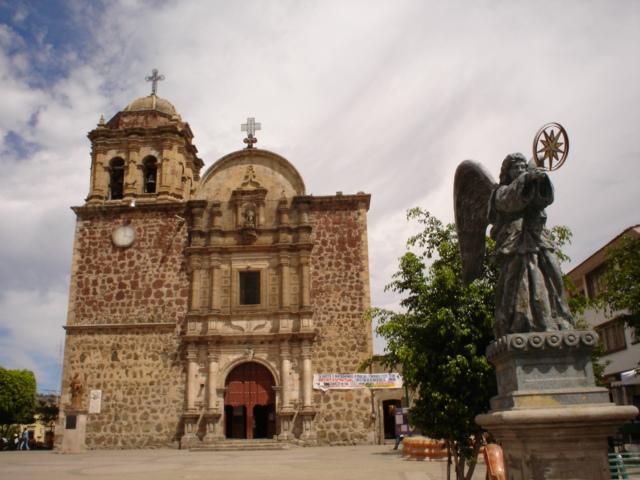 Tequila was first produced in the 16th century near the location of the city of Tequila, although the city was not officially established until 1656. The Aztec people had previously made a fermented beverage from the agave plant, which they called octli (also called pulque), long before the Spanish arrived in 1521. When the Spanish conquistadors ran out of their own brandy, they began to distill this agave drink to produce North America's first indigenous distilled spirit.
Tequila was first produced in the 16th century near the location of the city of Tequila, although the city was not officially established until 1656. The Aztec people had previously made a fermented beverage from the agave plant, which they called octli (also called pulque), long before the Spanish arrived in 1521. When the Spanish conquistadors ran out of their own brandy, they began to distill this agave drink to produce North America's first indigenous distilled spirit.
Some 80 years later, around 1600, Don Pedro Sánchez de Tagle, the Marquis of Altamira, began mass-producing tequila at the first factory in the territory of modern-day Jalisco. By 1608, the colonial governor of Nueva Galicia had begun to tax his products.The tequila that is popular today was first mass-produced in the early 1800s in Guadalajara,  Mexico.
Mexico.
Don Cenobio Sauza, founder of Sauza Tequila and Municipal President of the Village of Tequila from 1884-1885, was the first to export tequila to the United States. Don Cenobio's grandson Don Francisco Javier gained international attention for insisting that "there cannot be tequila where there are no agaves!" His efforts led to the practice that real tequila can only come from the State of Jalisco.
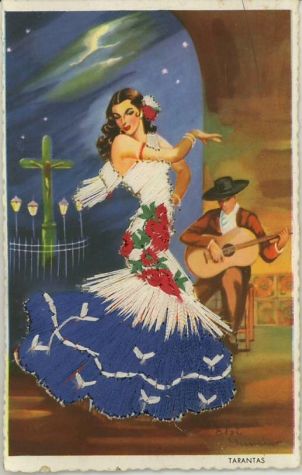 Culture
Culture
"Tequila is Mexico," said Carmelita Roman, widow of the late tequila producer Jesus Lopez Roman. "It's the only product that identifies us as a culture."
To understand tequila, you have to first appreciate its importance to the overall culture of Mexico and tequila's place in its history. Say the word tequila and it immediately brings to mind images of Pancho Villa, Cinco de Mayo, men riding the dusty roads of the old 'west' and of brightly-dressed señoritas spinning around the fountains marking the center of most Mexican towns, whirling in traditional dance. But, it also suggests images of pop stars, margaritas and endless parties. For some, as I stated in my introduction, it also conjurs up images of lampshades and nights better left conveniently forgotten.
Tequila is not simply a drink, it is a culture, an emblem, and a rallying call for Mexican identity. It is a tradition and heritage. It is about families and feuds, about land, politics, and it is an economic force. For all the marketing and the hype, the advertising and the promotion, tequila still retains its magic after its 400-plus year journey to get to this point.
The primary location for Tequila production is the Jalisco state around the towns of Tequila and Arandas, using only one species of plant, the blue agave. Tequila is an androgynous word, being written as both el tequila and la tequila in Spanish; masculine and feminine (although the masculine form is more commonly used). Technically, all tequila is a mezcal, as are all agave spirits, but like cognac is a brandy from a specific region of France, tequila is a mezcal from a specific region of Mexico.
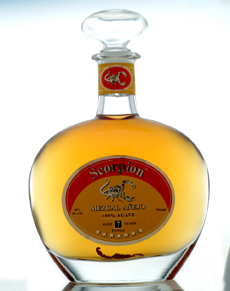 In Tequila: Panegyric and Emblem, the Mexican poet Alvaro Mutis wrote: "Tequila has no history; there are no anecdotes confirming its birth. This is how it’s been since the beginning of time, for tequila is a gift from the gods and they don’t tend to offer fables when bestowing favors. That is the job of mortals, the children of panic and tradition." (from issue 27, Artes de México Magazine.)
In Tequila: Panegyric and Emblem, the Mexican poet Alvaro Mutis wrote: "Tequila has no history; there are no anecdotes confirming its birth. This is how it’s been since the beginning of time, for tequila is a gift from the gods and they don’t tend to offer fables when bestowing favors. That is the job of mortals, the children of panic and tradition." (from issue 27, Artes de México Magazine.)
Mezcal wine - tequila's grandparent - was first produced only a few decades after the conquest that brought the Spaniards to the New World in 1521. No one has ever come up with an exact date, but it was likely around 1535. It was variously called mezcal brandy, agave wine, mezcal tequila and finally, after a couple of centuries, one variety was simply called tequila.
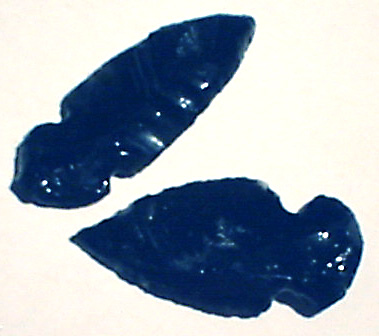 The word tequila itself is also filled with mystery. It is said to be an ancient Nahuatl term. The Nahuatl were the original people who lived in the area. The word means (depending on the authority) "the place of harvesting plants," "the place of wild herbs," "place where they cut," "the place of work" or even "the place of tricks." According to Jose Maria Muria, tequila comes form the Nahuatl words tequitl (work, duty, job or task) and tlan (place). Other sources say it means "the rock that cuts," most likely a reference to the volcanic obsidian that is common in the area. Obsidian was important for natives in making arrowheads, axes, cutting and scraping tools. It litters many fields and has even been incorporated into sidewalks in the town of Tequila. Cascahuin says the word is a corruption of "tetilla" because the volcano looked like a woman's small breast (somewhat dubious if you've seen the volcano).
The word tequila itself is also filled with mystery. It is said to be an ancient Nahuatl term. The Nahuatl were the original people who lived in the area. The word means (depending on the authority) "the place of harvesting plants," "the place of wild herbs," "place where they cut," "the place of work" or even "the place of tricks." According to Jose Maria Muria, tequila comes form the Nahuatl words tequitl (work, duty, job or task) and tlan (place). Other sources say it means "the rock that cuts," most likely a reference to the volcanic obsidian that is common in the area. Obsidian was important for natives in making arrowheads, axes, cutting and scraping tools. It litters many fields and has even been incorporated into sidewalks in the town of Tequila. Cascahuin says the word is a corruption of "tetilla" because the volcano looked like a woman's small breast (somewhat dubious if you've seen the volcano).
Cultivation  The agave is planted, tended, and harvested by hand. The men who harvest it, the Jimadors, contain generations of knowledge about the plants and the ways in which they need to be harvested. The Jimadors must be able to work swiftly in the tight rows, pull out the pups without damaging the mother plant, clear the piñas (spanish word for pineapple), and decide when and if each plant is ready to be harvested. Too soon and there are not enough sugars, too late and the plant will have used its sugars to grow a quiote 20-40 foot high stem or it will start to rot. The piñas, weighing 40 to 70 pounds, are cut away with a special knife called a
The agave is planted, tended, and harvested by hand. The men who harvest it, the Jimadors, contain generations of knowledge about the plants and the ways in which they need to be harvested. The Jimadors must be able to work swiftly in the tight rows, pull out the pups without damaging the mother plant, clear the piñas (spanish word for pineapple), and decide when and if each plant is ready to be harvested. Too soon and there are not enough sugars, too late and the plant will have used its sugars to grow a quiote 20-40 foot high stem or it will start to rot. The piñas, weighing 40 to 70 pounds, are cut away with a special knife called a  coa. They are then shredded, their juices pressed out and put into fermentation tanks and vats. Some tequila companies still use the traditional method (artisian tequila) in which the pinas are crushed with a stone wheel. The final process is to add a yeast to the vats to convert the sugars into alcohol. Each company keeps their own yeast a tight secret.
coa. They are then shredded, their juices pressed out and put into fermentation tanks and vats. Some tequila companies still use the traditional method (artisian tequila) in which the pinas are crushed with a stone wheel. The final process is to add a yeast to the vats to convert the sugars into alcohol. Each company keeps their own yeast a tight secret.
There is a clear difference in taste between tequila that is made from lowland or highland agave plants. Agave plants that are grown in the highlands often have more fruit tastes due to the growing process. The plants are grown on the western side of the hills, allowing the plants to receive the most amount of sunlight throughout the day. These plants are taller, wider, and juicier. Agave that are grown in the lowlands have more earth tastes, and are typically on the smaller side.
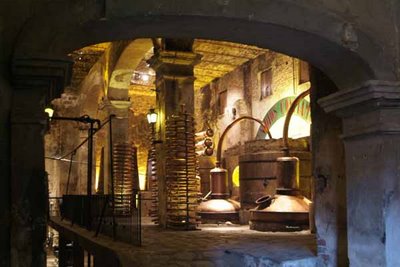 It takes at least eight years to make a bottle of tequila, sometimes as long as 20. That's because tequila is not made from the typical grains or fruits most alcoholic beverages are made from. It is distilled from the roasted center (piña) of the blue agave (maguey) plant - the agave tequilana weber azul - one of 136 species of agave that grow in Mexico. Imagine having to plan - and budget - for a product you won't see for perhaps another decade. Imagine having to care for and nurture those agaves from their planting to their harvesting, many years later, without knowing how the market will unfold in the interim, but still having to hire farm workers to weed, prune and maintain the fields.
It takes at least eight years to make a bottle of tequila, sometimes as long as 20. That's because tequila is not made from the typical grains or fruits most alcoholic beverages are made from. It is distilled from the roasted center (piña) of the blue agave (maguey) plant - the agave tequilana weber azul - one of 136 species of agave that grow in Mexico. Imagine having to plan - and budget - for a product you won't see for perhaps another decade. Imagine having to care for and nurture those agaves from their planting to their harvesting, many years later, without knowing how the market will unfold in the interim, but still having to hire farm workers to weed, prune and maintain the fields.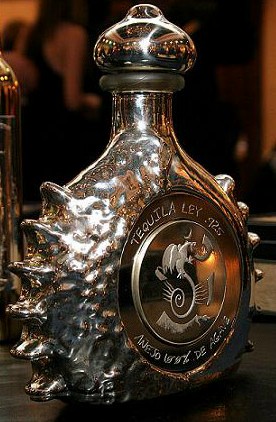
A one-liter bottle of limited-edition premium tequila was sold for $225,000 in July 2006 in Tequila, Jalisco, by the company Tequila Ley .925. The bottle which contains the tequila is a two-kilo display of platinum and gold. The manufacturer has received the Certificate from Guinness World Records for the most expensive bottle of spirit ever sold. While the bottle is impressive, my immediate thoughts were, "How does the tequila taste?" I'll use our favorite restaurant line here and embellish, "You can't eat the decor, nor can a fancy bottle make its contents quality."
In 2008, Mexican scientists discovered a method to transform 80 proof (40% 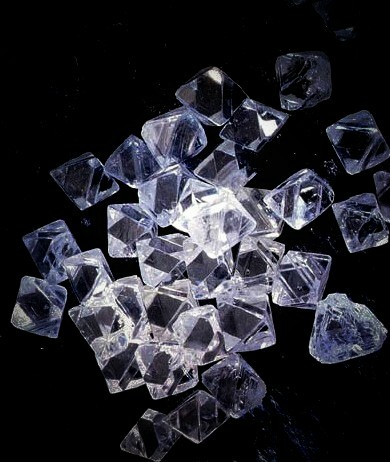 alcohol) tequila into diamonds. This process involves heating the tequila to over 1,400 degrees F to vaporize the tequila. The tequila particles are cooled, and settle upon steel or silicon trays in an even, pure layer. The results are hoped to have numerous commercial and industrial applications, but are far too small for use in jewelry.
alcohol) tequila into diamonds. This process involves heating the tequila to over 1,400 degrees F to vaporize the tequila. The tequila particles are cooled, and settle upon steel or silicon trays in an even, pure layer. The results are hoped to have numerous commercial and industrial applications, but are far too small for use in jewelry.
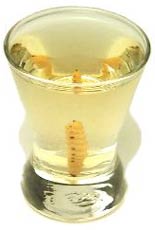 It is also a common misconception that all tequilas contain a 'worm' in the bottle. Only certain mezcals, usually from the state of Oaxaca, are ever sold con gusano. Renown tequila expert Tomas Estes (see this month's Special Feature ) suggests that the practice may have first been practiced as a way for tequila makers to show the quality and proof of their product, in that a larve could be sustained by the proper alcohol content. Recent use of this practice probably began, or was resumed, as a marketing gimmick in the 1940s. The worm is actually the larval form of the moth Hypopta agavis that lives on the agave plant. Finding one in the plant during processing indicates an infestation and, correspondingly, probably a lower quality product.
It is also a common misconception that all tequilas contain a 'worm' in the bottle. Only certain mezcals, usually from the state of Oaxaca, are ever sold con gusano. Renown tequila expert Tomas Estes (see this month's Special Feature ) suggests that the practice may have first been practiced as a way for tequila makers to show the quality and proof of their product, in that a larve could be sustained by the proper alcohol content. Recent use of this practice probably began, or was resumed, as a marketing gimmick in the 1940s. The worm is actually the larval form of the moth Hypopta agavis that lives on the agave plant. Finding one in the plant during processing indicates an infestation and, correspondingly, probably a lower quality product.




 out socializing, it is my drink of choice and I probably drink it more than most. That is, of course, unless you are still in Mr. or Ms. Party Mode and are the, "Hey let's do shots!" type. Been there ...done that. You'll get over it.
out socializing, it is my drink of choice and I probably drink it more than most. That is, of course, unless you are still in Mr. or Ms. Party Mode and are the, "Hey let's do shots!" type. Been there ...done that. You'll get over it.  At this stage in my life I have become a fan of the taste and the only true way (for me) to enjoy that aspect of tequila is to sip it, in the same way one might sip a brandy, or a cognac. Shots, on the other hand are for enjoying the effects of tequila. Far be it from me to tell you what you should or should not derive from your personal interaction with this ancient elixer. To each his own. If you see me out, please don't challenge me to a shot contest...I said, "acting like a grown up"...it doesn't mean I am one.
At this stage in my life I have become a fan of the taste and the only true way (for me) to enjoy that aspect of tequila is to sip it, in the same way one might sip a brandy, or a cognac. Shots, on the other hand are for enjoying the effects of tequila. Far be it from me to tell you what you should or should not derive from your personal interaction with this ancient elixer. To each his own. If you see me out, please don't challenge me to a shot contest...I said, "acting like a grown up"...it doesn't mean I am one.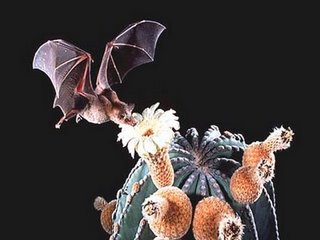 leaves, which can grow to over 6 feet to 7 feet in length. Wild agaves sprout a shoot when about five years old which grows into a stem up to 13 ft. and is topped with yellow flowers.
leaves, which can grow to over 6 feet to 7 feet in length. Wild agaves sprout a shoot when about five years old which grows into a stem up to 13 ft. and is topped with yellow flowers. Tequila was first produced in the 16th century near the location of the city of Tequila, although the city was not officially established until 1656. The Aztec people had previously made a fermented beverage from the agave plant, which they called octli (also called pulque), long before the Spanish arrived in 1521. When the Spanish conquistadors ran out of their own brandy, they began to distill this agave drink to produce North America's first indigenous distilled spirit.
Tequila was first produced in the 16th century near the location of the city of Tequila, although the city was not officially established until 1656. The Aztec people had previously made a fermented beverage from the agave plant, which they called octli (also called pulque), long before the Spanish arrived in 1521. When the Spanish conquistadors ran out of their own brandy, they began to distill this agave drink to produce North America's first indigenous distilled spirit. Mexico.
Mexico. Culture
Culture In Tequila: Panegyric and Emblem, the Mexican poet Alvaro Mutis wrote: "Tequila has no history; there are no anecdotes confirming its birth. This is how it’s been since the beginning of time, for tequila is a gift from the gods and they don’t tend to offer fables when bestowing favors. That is the job of mortals, the children of panic and tradition." (from issue 27, Artes de México Magazine.)
In Tequila: Panegyric and Emblem, the Mexican poet Alvaro Mutis wrote: "Tequila has no history; there are no anecdotes confirming its birth. This is how it’s been since the beginning of time, for tequila is a gift from the gods and they don’t tend to offer fables when bestowing favors. That is the job of mortals, the children of panic and tradition." (from issue 27, Artes de México Magazine.) The word tequila itself is also filled with mystery. It is said to be an ancient Nahuatl term. The Nahuatl were the original people who lived in the area. The word means (depending on the authority) "the place of harvesting plants," "the place of wild herbs," "place where they cut," "the place of work" or even "the place of tricks." According to Jose Maria Muria, tequila comes form the Nahuatl words tequitl (work, duty, job or task) and tlan (place). Other sources say it means "the rock that cuts," most likely a reference to the volcanic obsidian that is common in the area. Obsidian was important for natives in making arrowheads, axes, cutting and scraping tools. It litters many fields and has even been incorporated into sidewalks in the town of Tequila. Cascahuin says the word is a corruption of "tetilla" because the volcano looked like a woman's small breast (somewhat dubious if you've seen the volcano).
The word tequila itself is also filled with mystery. It is said to be an ancient Nahuatl term. The Nahuatl were the original people who lived in the area. The word means (depending on the authority) "the place of harvesting plants," "the place of wild herbs," "place where they cut," "the place of work" or even "the place of tricks." According to Jose Maria Muria, tequila comes form the Nahuatl words tequitl (work, duty, job or task) and tlan (place). Other sources say it means "the rock that cuts," most likely a reference to the volcanic obsidian that is common in the area. Obsidian was important for natives in making arrowheads, axes, cutting and scraping tools. It litters many fields and has even been incorporated into sidewalks in the town of Tequila. Cascahuin says the word is a corruption of "tetilla" because the volcano looked like a woman's small breast (somewhat dubious if you've seen the volcano).  The agave is planted, tended, and harvested by hand. The men who harvest it, the Jimadors, contain generations of knowledge about the plants and the ways in which they need to be harvested. The Jimadors must be able to work swiftly in the tight rows, pull out the pups without damaging the mother plant, clear the piñas (spanish word for pineapple), and decide when and if each plant is ready to be harvested. Too soon and there are not enough sugars, too late and the plant will have used its sugars to grow a quiote 20-40 foot high stem or it will start to rot. The piñas, weighing 40 to 70 pounds, are cut away with a special knife called a
The agave is planted, tended, and harvested by hand. The men who harvest it, the Jimadors, contain generations of knowledge about the plants and the ways in which they need to be harvested. The Jimadors must be able to work swiftly in the tight rows, pull out the pups without damaging the mother plant, clear the piñas (spanish word for pineapple), and decide when and if each plant is ready to be harvested. Too soon and there are not enough sugars, too late and the plant will have used its sugars to grow a quiote 20-40 foot high stem or it will start to rot. The piñas, weighing 40 to 70 pounds, are cut away with a special knife called a  coa. They are then shredded, their juices pressed out and put into fermentation tanks and vats. Some tequila companies still use the traditional method (artisian tequila) in which the pinas are crushed with a stone wheel. The final process is to add a yeast to the vats to convert the sugars into alcohol. Each company keeps their own yeast a tight secret.
coa. They are then shredded, their juices pressed out and put into fermentation tanks and vats. Some tequila companies still use the traditional method (artisian tequila) in which the pinas are crushed with a stone wheel. The final process is to add a yeast to the vats to convert the sugars into alcohol. Each company keeps their own yeast a tight secret. It takes at least eight years to make a bottle of tequila, sometimes as long as 20. That's because tequila is not made from the typical grains or fruits most alcoholic beverages are made from. It is distilled from the roasted center (piña) of the blue agave (maguey) plant - the agave tequilana weber azul - one of 136 species of agave that grow in Mexico. Imagine having to plan - and budget - for a product you won't see for perhaps another decade. Imagine having to care for and nurture those agaves from their planting to their harvesting, many years later, without knowing how the market will unfold in the interim, but still having to hire farm workers to weed, prune and maintain the fields.
It takes at least eight years to make a bottle of tequila, sometimes as long as 20. That's because tequila is not made from the typical grains or fruits most alcoholic beverages are made from. It is distilled from the roasted center (piña) of the blue agave (maguey) plant - the agave tequilana weber azul - one of 136 species of agave that grow in Mexico. Imagine having to plan - and budget - for a product you won't see for perhaps another decade. Imagine having to care for and nurture those agaves from their planting to their harvesting, many years later, without knowing how the market will unfold in the interim, but still having to hire farm workers to weed, prune and maintain the fields.
 alcohol) tequila into diamonds. This process involves heating the tequila to over 1,400 degrees F to vaporize the tequila. The tequila particles are cooled, and settle upon steel or silicon trays in an even, pure layer. The results are hoped to have numerous commercial and industrial applications, but are far too small for use in jewelry.
alcohol) tequila into diamonds. This process involves heating the tequila to over 1,400 degrees F to vaporize the tequila. The tequila particles are cooled, and settle upon steel or silicon trays in an even, pure layer. The results are hoped to have numerous commercial and industrial applications, but are far too small for use in jewelry. It is also a common misconception that all tequilas contain a 'worm' in the bottle. Only certain mezcals, usually from the state of Oaxaca, are ever sold con gusano. Renown tequila expert Tomas Estes (see this month's Special Feature ) suggests that the practice may have first been practiced as a way for tequila makers to show the quality and proof of their product, in that a larve could be sustained by the proper alcohol content. Recent use of this practice probably began, or was resumed, as a marketing gimmick in the 1940s. The worm is actually the larval form of the moth Hypopta agavis that lives on the agave plant. Finding one in the plant during processing indicates an infestation and, correspondingly, probably a lower quality product.
It is also a common misconception that all tequilas contain a 'worm' in the bottle. Only certain mezcals, usually from the state of Oaxaca, are ever sold con gusano. Renown tequila expert Tomas Estes (see this month's Special Feature ) suggests that the practice may have first been practiced as a way for tequila makers to show the quality and proof of their product, in that a larve could be sustained by the proper alcohol content. Recent use of this practice probably began, or was resumed, as a marketing gimmick in the 1940s. The worm is actually the larval form of the moth Hypopta agavis that lives on the agave plant. Finding one in the plant during processing indicates an infestation and, correspondingly, probably a lower quality product.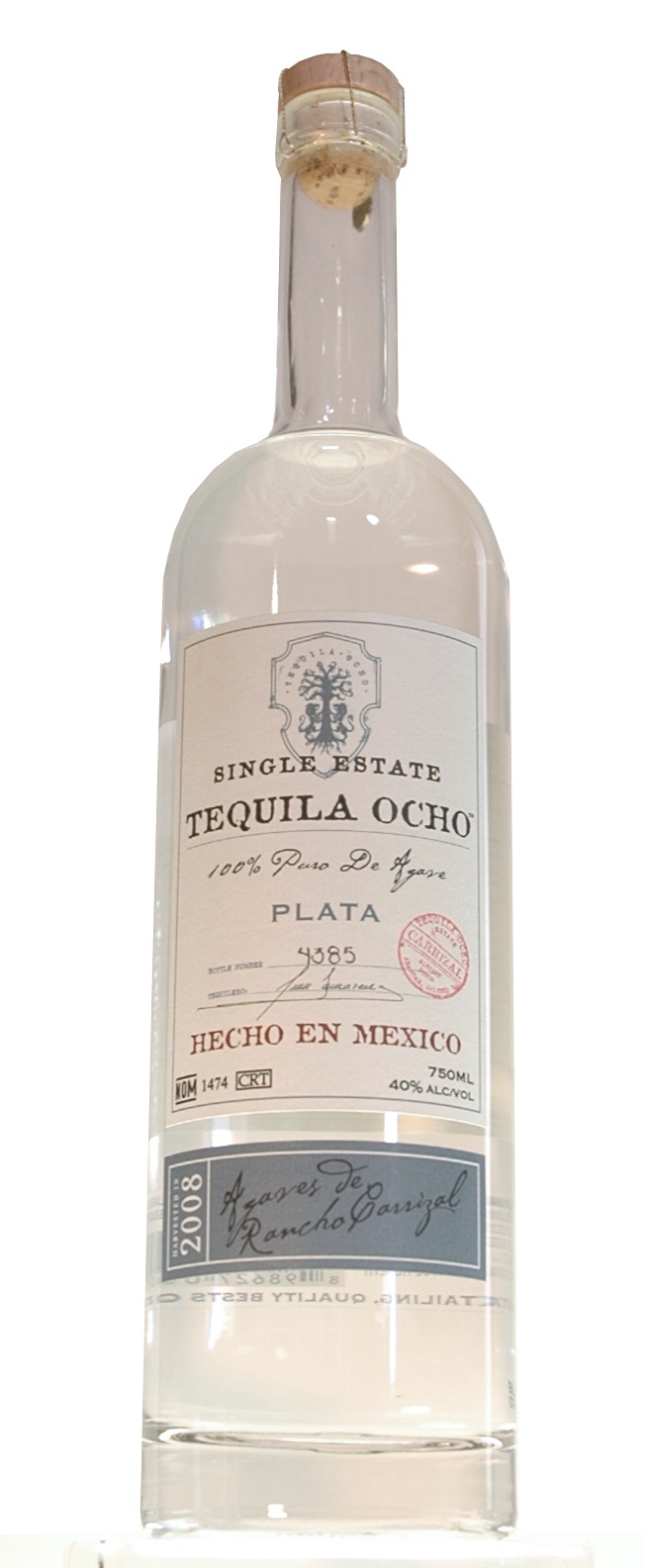 Tequila Ocho is the product of a collaboration between third generation Tequilero Felipe Camarena and Tomas Estes, Mexican Ambassador of Tequila to Europe. What differentiates Ocho from other tequilas and makes it unique in its category is its rarity. Because of the time it takes an agave to mature, each estate cannot be replenished for almost ten years after each harvest, thus making each vintage of Ocho a rare and collectable tequila. Ocho was launched on August 8, 2008 in California, and the first vintage was sold out in less than six months.
Tequila Ocho is the product of a collaboration between third generation Tequilero Felipe Camarena and Tomas Estes, Mexican Ambassador of Tequila to Europe. What differentiates Ocho from other tequilas and makes it unique in its category is its rarity. Because of the time it takes an agave to mature, each estate cannot be replenished for almost ten years after each harvest, thus making each vintage of Ocho a rare and collectable tequila. Ocho was launched on August 8, 2008 in California, and the first vintage was sold out in less than six months.  While Ocho’s product concept is highly innovative, the process by which the tequila is made remains highly traditional. All agaves are slow-cooked at low temperatures in stone ovens and fermented naturally with airborne yeast. The distillation is done very slowly at low heat to retain the maximum agave flavors. No chemicals are used. The artisanal approach is intensely handcrafted at every step of production, including the packaging, when each bottle is numbered by hand and stamped with the estate name of each vintage.
While Ocho’s product concept is highly innovative, the process by which the tequila is made remains highly traditional. All agaves are slow-cooked at low temperatures in stone ovens and fermented naturally with airborne yeast. The distillation is done very slowly at low heat to retain the maximum agave flavors. No chemicals are used. The artisanal approach is intensely handcrafted at every step of production, including the packaging, when each bottle is numbered by hand and stamped with the estate name of each vintage.